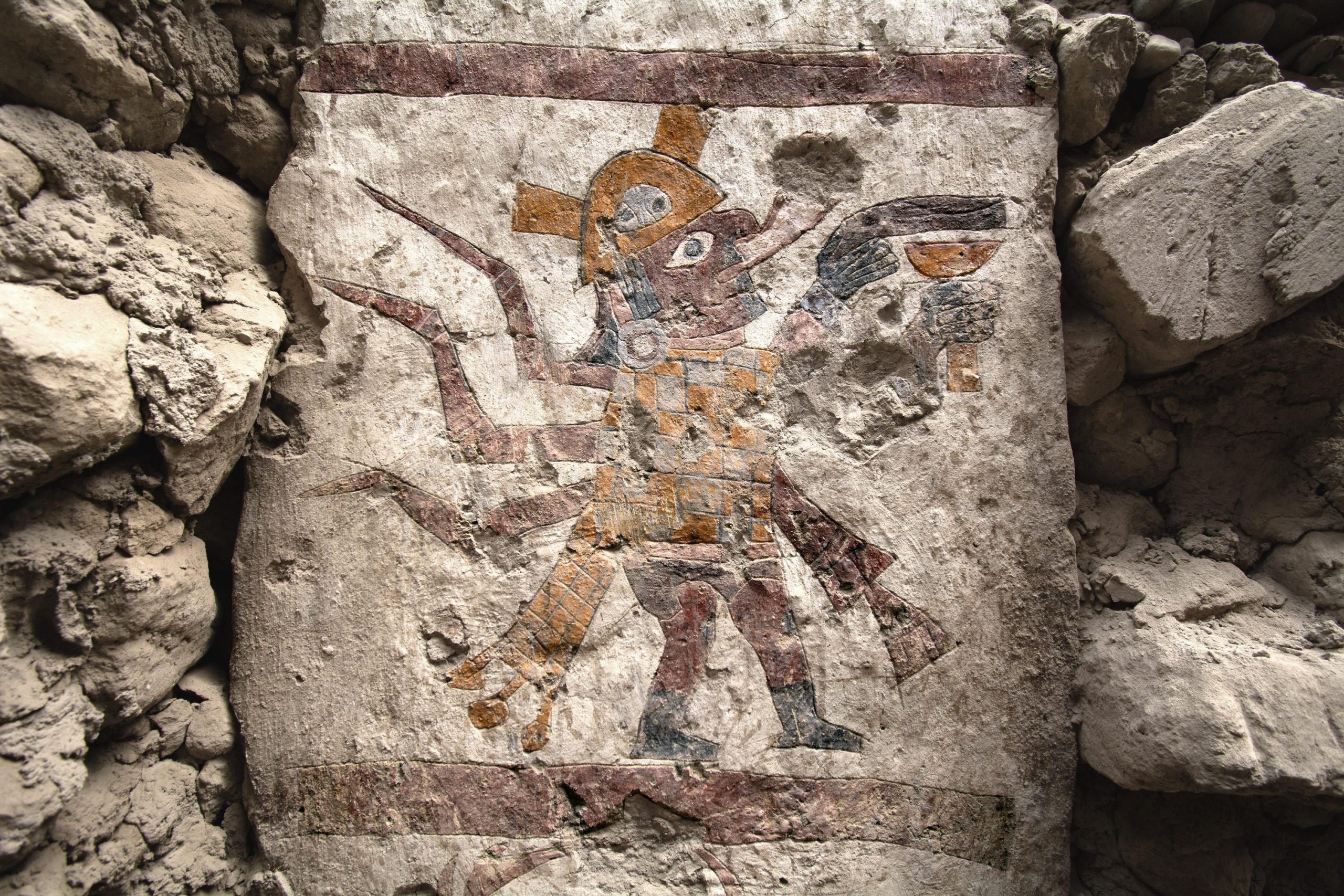
Seventy years on from its discovery, the Moche site of Pañamarca in northwestern Peru continues to surprise archaeologists.
Excavations at the 1,600-year-old settlement picked up pace in 2018 with the arrival of a joint U.S.-Peruvian team, and the latest season has produced perhaps the most confounding and stunning discovery yet: the vibrantly painted throne room of a female ruler. It is without precedent in all of Peruvian archaeology, and researchers say the scenes splashed across its murals are overturning expectations of gender roles in the ancient Moche world.
The Moche civilization flourished in the arable plains between the Andes and the Pacific Ocean from the 1st to the 8th centuries C.E., with the site at Pañamarca standing at its southernmost frontier. Rediscovered and documented in the 1950s, Pañamarca is best known for its colorful murals, the preservation and digitization of which is a focus of the ongoing work.
Panoramic shot of the Moche settlement in northern Peru. Photo: courtesy José Antonio Ochatoma Cabrera/Paisajes Arqueológicos de Pañamarca.
The throne, which is built from painted adobe, directly faces the Pacific Ocean and stands in a room of walls and pillars marked with four scenes depicting a powerful woman. Researchers have named it the Hall of the Moche Imaginary on account of the fantastical painted vignettes that shed light on Moche beliefs and practices. The throne had been entombed by the Moche people for protection and at the end of the season the archaeologists reburied it. The scenes include an entire workshop of women spinning and weaving, a procession of men carrying the female ruler’s crown, and a scene filled with sea creatures. Immediately surrounding the throne are scenes of a crowned woman raising a goblet and an enthroned woman speaking to a bird-man, a common hybrid figure in Moche culture.
“We often say that Pañamarca was a place of unprecedented creativity and every season it seems like that point becomes even more true,” Lisa Trever, a professor of Pre-Columbian art history and archaeology at Columbia University, said via email. “These findings tell us that powerful women were not merely “priestesses,” but that they were leaders who wielded socio-political power as well.”
As this is the first strong evidence of female rule across Moche sites, researchers anticipate there will be academic debate over whether the woman painted on the throne room is a human or a divine figure, such as a priestess, goddess, or queen. Onsite evidence, however, suggests the female ruler was very much of this world. The team—made up of researchers from the Archaeological Landscapes of Pañamarca, Colorado’s Denver Museum of Nature and Science, and New York’s Columbia University—uncovered greenstone beads, threads, and even human hair, all of which, they said, “points to a 7th-century woman leader of Pañamarca.”
Painted architecture within the Hall of the Moche Imaginary revealed in 2024. Courtesy Lisa Trever.
It’s a fitting discovery for a team that has previously aimed to bring about greater gender equity in field research and has long sought to broaden the focus on the Moche away from the familiar subjects of combat and sacrifice.
The most recent excavations also uncovered for the first time the monumental Hall of the Braided Serpents, named for pillars painted with snakes intertwined with humans. Other painted images include those of warriors, weapons, and monsters. The hall is situated above a plaza offering a privileged viewing position, similar to box seats at a theater or stadium, researchers wrote.
Conservator César Alfredo Velásquez and archaeologist–painter Pedro Neciosup work on the painted throne within the Hall of the Moche Imaginary. Photo: courtesy Lisa Trever.
The site is built on top of a granite hill in the lower Nepeña Valley, near the modern-day city of Chimbote, and consists of a settlement spread across stepped abode platforms. To date, a large walled plaza and numerous buildings have been excavated.